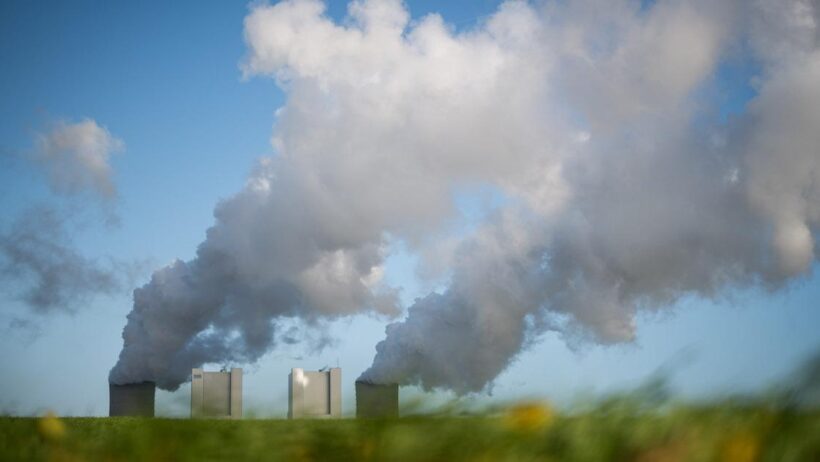The issue of climate change has consistently engaged the global community, inciting fervent debate and prompting urgent calls to action. The term “Climate Clock” is symbolically significant, representing humanity’s awareness of our diminishing window for meaningful environmental action. A closer examination of the Climate Clock reveals the gravity of our situation—counting down to critical change necessitates a collective upheaval in our societal, economic, and political paradigms. So, when does the Climate Clock end?
To grasp the urgency, consider the scientific consensus on climate change: the Intergovernmental Panel on Climate Change (IPCC) reports that global temperatures must not rise more than 1.5 degrees Celsius above pre-industrial levels to avert the most catastrophic impacts of climate disruption. According to various models, we may only have until approximately 2030 to implement drastic reductions in greenhouse gas emissions. This temporal limit creates a stark, formidable impetus for immediate and sustained action.
As the days, weeks, and years tick away, the concept of an expiration date on our planet’s habitability looms larger than ever. This countdown is not merely an abstract notion but a visceral reality that should galvanize individuals and nations alike. It prompts an essential question: what does an end mean in this context?
The conclusion of the Climate Clock may not signify the end of the Earth as we know it, but rather a tipping point—a threshold beyond which our ecological feedback loops become irreparable. Events like intensified storms, droughts, flooding, and biodiversity loss may escalate from inconvenient to insurmountable if the trajectory of our carbon emissions persists unchecked. Understanding this potential future incites curiosity about the mechanisms we can employ to redirect our fate.
To combat this existential threat, several strategies exist, each requiring concerted efforts across all levels of society. Firstly, the significance of transitioning to renewable energy sources cannot be overstated. Solar, wind, and hydroelectric power must replace fossil fuels, which are the most significant contributors to carbon emissions. The reallocation of resources towards clean technologies could potentially extend our Climate Clock, allowing for a constructive reformation of our energy reliance. But this transition is not just an environmental necessity; it’s an economic opportunity, promising new jobs and industries.
In tandem with renewable energy adoption, improving energy efficiency is paramount. Our built environments—homes, workplaces, and city infrastructures—can be retrofitted and redesigned to minimize energy use. Such measures not only curtail emissions but also conserve precious resources, instilling a sense of environmental stewardship among the populace. Furniture manufacturers that embrace sustainable materials and engineers who prioritize green building practices collectively contribute to extending humanity’s timeline before the Climate Clock strikes its last hour.
Moreover, we cannot neglect the role of reforestation and afforestation in this effort. Trees serve as natural carbon sinks; thus, cultivating more forests can significantly counteract the effects of atmospheric carbon. Schools, nonprofits, and local governments need to foster a culture of planting trees, engaging communities in efforts that enhance biodiversity while mitigating climate impacts. Every sapling nurtured today is a step toward prolonging the breathing room for future generations.
The food systems we engage with every day present another critical lever. Agriculture, particularly industrial farming, stands as a noteworthy contributor to greenhouse emissions. Transitioning to sustainable agricultural practices, such as permaculture, regenerative farming, and organic production, creates not only healthy food options but also resilient ecosystems. By reconsidering what we consume and how it’s produced, we can flex our collective muscle in favor of a more sustainable future.
Education emerges as a foundational pillar in this movement. Cultivating awareness about climate change, its ramifications, and the importance of sustainable practices must begin from an early age. Schools should integrate climate literacy into curricula, empowering the next generation with knowledge and tools to engage in activism. They can become stewards of change, equipped with the perspective necessary for redefining our relationship with the environment.
Alongside education, policy transformation is indispensable. Governments worldwide must enact stringent regulations aimed at carbon reduction, implement robust incentives for green technologies, and endorse international treaties that promote cooperation in climate action. Politicians must put aside divisive agendas and collaborate on anti-climate change measures, uniting their citizens in common purpose. Failure to act politically risks allowing corporate interests to overshadow vital environmental health and sustainability commitments.
International activism, too, plays a critical role. Movements such as Fridays for Future and Extinction Rebellion showcase the willingness of people to rally together against the forces of climate inertia. Collective action garners attention, pushing climate change higher on political agendas and necessitating immediate discourse for transformative solutions. We inspire change not only through our words but notably through our actions as a united front.
As we contemplate the question of when the Climate Clock ends, it is imperative to recognize that the end is not predestined but is contingent upon our actions—or inactions—today. The impetus for change lies within each of us. As individuals, we hold the power to influence collaborative efforts, to demand accountability, and to embody responsible stewardship. However, time is of the essence; we cannot afford complacency. The urgency of the Climate Clock resonates through the very air we breathe. Let that awareness steer us toward the profound changes required to alter its course. Each tick of the clock can be viewed as both a warning and a call to action, one that we can answer collectively, striving to ensure that when the clock reaches its limit, it signals not an end, but the dawn of a new era of sustainability and harmony with our planet.







